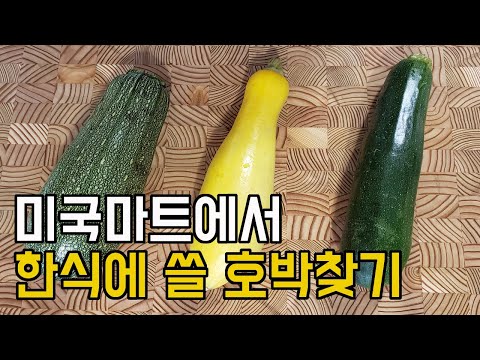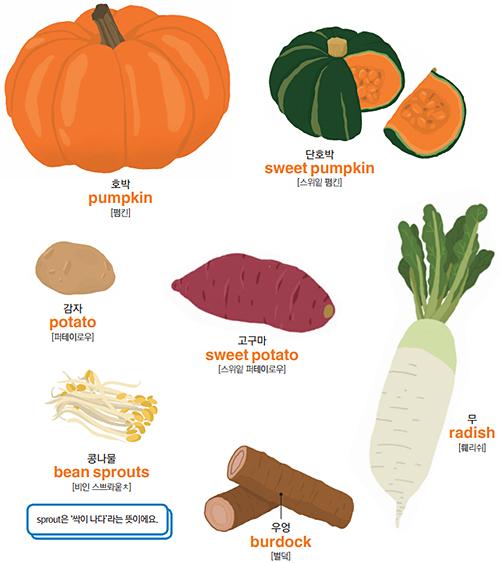밤호박 영어로: 신비로운 채소의 비밀 Revealed
미국 호박 종류 미국마트 애호박 단호박 늙은호박 주키니 스쿼시 영어로 Difference Between Zucchini Yellow Squash Buttercup Butternut
Keywords searched by users: 밤호박 영어로 Kabocha, Buttercup squash, 단호박 영어, 늙은호박 영어로, 애호박 영어로, 미국 단호박, Kabocha squash, 맷돌 호박 영어로
밤호박 영어로: Unraveling the Intricacies of Translation
In the diverse tapestry of the Korean language, certain expressions carry a cultural depth that might not be immediately apparent to non-native speakers. One such term that encapsulates this linguistic richness is “밤호박 영어로” (bamhobak in English). In this article, we will delve into the various dimensions of this phrase, exploring its literal translation, cultural context, common scenarios of use, etymology, popular misconceptions, practical applications, and insights from online communities. Additionally, we will touch upon related terms such as Kabocha, Buttercup squash, 단호박 영어, 늙은호박 영어로, 애호박 영어로, 미국 단호박, Kabocha squash, and 맷돌 호박 영어로.
Understanding the Term
Literal Translation and Meaning
밤호박 영어로, when translated literally, means “butternut squash in English.” The term comprises three main components:
- 밤호박 (Bamhobak): This refers to butternut squash, a type of winter squash known for its sweet, nutty taste.
- 영어로 (Yeongeoro): Translated to “in English,” indicating a linguistic context.
Cultural Context
Significance and Usage
In Korean culture, food holds immense cultural significance. 밤호박 영어로 is often used in culinary discussions, recipes, and everyday conversations related to cooking and ingredients. The term reflects the integration of Western vegetables into Korean cuisine, highlighting the globalization of food culture.
Common Scenarios
Examples of Usage
-
Recipe Discussions: When sharing or discussing recipes that involve butternut squash, Koreans might use the term to specify the ingredient in English.
- Example: “이 요리에는 밤호박 영어로가 들어가야 해요.” (This dish requires butternut squash in English.)
-
Grocery Shopping: In the context of grocery shopping or creating shopping lists, individuals might use 밤호박 영어로 to distinguish butternut squash from other types of squash.
- Example: “쇼핑 리스트에 밤호박 영어로를 추가해 주세요.” (Please add butternut squash in English to the shopping list.)
Etymology and Origin
Tracing the Roots
The etymology of 밤호박 영어로 can be understood by breaking down its components. “밤호박” specifically points to the butternut squash, while “영어로” clarifies the linguistic aspect, emphasizing the use of the English language.
Popular Misconceptions
Addressing Misunderstandings
One common misconception is that 밤호박 영어로 refers only to butternut squash. While this is the primary translation, the term is also used more broadly to encompass other squash varieties with similar characteristics.
Practical Applications
Tips for Effective Use
-
Clarity in Recipes: When sharing recipes with an international audience, using 밤호박 영어로 provides clarity and ensures that the ingredient is universally understood.
-
Cultural Exchange: Embrace 밤호박 영어로 as a bridge between traditional Korean ingredients and the global culinary landscape. Share insights into how butternut squash is used in both Korean and Western cuisines.
Online Community Insights
Wisdom from Discussions
Online forums and platforms provide a glimpse into how native speakers perceive and use 밤호박 영어로. According to discussions on platforms like Hinative and Naver, users often seek clarification on the term when encountering it in recipes or culinary discussions. It serves as a reminder of the ongoing cultural exchange in the digital age.
Related Terms
Exploring Variations
To broaden our understanding, let’s briefly touch upon related terms:
- Kabocha: A Japanese variety of winter squash, often used interchangeably with 밤호박.
- Buttercup Squash: Another winter squash with a sweet flavor, resembling 밤호박.
- 단호박 영어로 (Dan Hobak Yeongeoro): Translating to “sweet pumpkin in English,” this term is used for a different type of squash.
- 늙은호박 영어로 (Neulgeun Hobak Yeongeoro): Refers to “old pumpkin in English,” indicating a matured squash.
- 애호박 영어로 (Ae Hobak Yeongeoro): Means “baby pumpkin in English,” used for young and tender squash.
- 미국 단호박 (Miguk Dan Hobak): Translates to “American sweet pumpkin,” highlighting the regional origin.
- 맷돌 호박 영어로 (Maetdol Hobak Yeongeoro): Refers to “stone mill squash in English,” indicating a specific type of squash.
FAQs (Frequently Asked Questions)
Q1: Is 밤호박 영어로 limited to butternut squash?
A1: While the primary translation is butternut squash, the term is also used broadly for squash varieties with similar characteristics.
Q2: How can I use 밤호박 영어로 in everyday conversations?
A2: Incorporate the term when discussing recipes, grocery shopping, or cultural exchanges related to food. It adds a linguistic dimension to your conversations.
Q3: Are there regional variations in the use of 밤호박 영어로?
A3: While the term is widely understood throughout Korea, regional dialects might introduce slight variations in pronunciation or alternative terms.
Q4: Can 밤호박 영어로 be used in formal writing?
A4: Yes, especially in contexts related to culinary literature, recipes, or discussions on international cuisine.
Q5: Are there other terms similar to 밤호박 영어로?
A5: Yes, related terms include Kabocha, Buttercup squash, 단호박 영어로, 늙은호박 영어로, 애호박 영어로, 미국 단호박, Kabocha squash, and 맷돌 호박 영어로.
In conclusion, 밤호박 영어로 encapsulates not only a specific ingredient but also symbolizes the cross-cultural dialogue embedded in modern Korean language usage. Understanding the term goes beyond a mere translation; it unveils the intricate layers of culinary and linguistic fusion. As you navigate the world of Korean cuisine, let 밤호박 영어로 serve as a gateway to a broader appreciation of global flavors and cultural exchanges.
Categories: 요약 14 밤호박 영어로

buttercup 이에요. butternut 은 색상이 노랑에 가깝고요.. 저 단호박 은 buttercup 임. Buttercup squash 라고 하시면 되요.
Kabocha
Kabocha: 깊이 있는 안내서 및 상세 정보
소개
Kabocha(다람쥐 호박)는 동양에서 널리 소비되고 있는 겨울 호박의 한 종류로, 그 특유의 단단하고 고당도의 고구마같은 맛으로 유명합니다. 이 호박은 주로 일본, 한국, 중국 등에서 재배되며 다양한 요리에 사용됩니다. 이 글에서는 Kabocha에 대한 상세한 정보와 활용 방법을 소개하겠습니다.
Kabocha의 특징
-
외관과 크기:
Kabocha는 둥근 모양과 단단한 겉껍질로 특징이 있습니다. 크기는 일반적으로 소형에서 중형으로 분류되며, 적당한 크기로 쉽게 손질할 수 있습니다. -
색상:
이 호박은 주로 짙은 녹색의 겉껍질을 가지고 있습니다. 가끔은 땅에 놓인 부분이 황갈색을 띠기도 합니다. -
고유한 단맛:
Kabocha는 다른 호박과는 달리 단맛이 강합니다. 이 특징은 요리에 고유의 맛과 향을 더해줍니다. -
영양가:
이 호박은 다양한 영양소를 풍부하게 함유하고 있습니다. 베타카로틴, 비타민 C, 칼륨 등이 풍부하여 건강에 도움을 줄 수 있습니다.
Kabocha의 요리 활용
-
조리 방법:
Kabocha는 다양한 방법으로 조리할 수 있습니다. 껍질을 까거나 깨끗하게 손질한 후 찌거나 구워 사용할 수 있습니다. -
튀김:
껍질을 제거하고 썰어 튀기면 바삭한 튀김 호박을 만들 수 있습니다. 간장이나 매운 소스와 함께 소주 안주로 인기가 있습니다. -
찌개와 국물 요리:
Kabocha는 국물 요리에도 잘 어울립니다. 국물의 단맛과 부드러운 식감이 조화를 이루어 맛을 더욱 풍부하게 합니다. -
볶음 요리:
다양한 채소나 고기와 함께 볶아도 좋습니다. 고소한 버터나 간장, 마늘 등을 활용하여 다양한 풍미를 느낄 수 있습니다.
자주 묻는 질문 (FAQ)
Q1: Kabocha와 호박은 같은 것인가요?
A1: Kabocha는 일종의 겨울 호박으로, 겉껍질이 단단하고 고당도의 단맛이 특징입니다.
Q2: Kabocha를 저장하는 최적의 방법은 무엇인가요?
A2: 시원한 곳에 보관하면서 직사광선을 피하며, 껍질을 손질하기 전에는 상온에 두는 것이 좋습니다.
Q3: Kabocha를 사용한 전통적인 한국 요리는 어떤 것이 있나요?
A3: ‘호박죽’은 Kabocha를 사용한 전통적인 한국 요리로, 단맛이 더해진 죽으로 많은 사람들에게 사랑받고 있습니다.
결론
Kabocha는 그 독특한 맛과 영양가로 다양한 요리에 활용되고 있습니다. 이 호박은 손쉬운 조리 방법과 풍부한 영양소를 가지고 있어 많은 가정에서 인기를 얻고 있습니다. 이 글을 통해 여러분은 Kabocha에 대한 깊이 있는 정보를 얻으며, 이를 통해 더 많은 요리 아이디어를 찾을 수 있을 것입니다.
Buttercup Squash
버터컵 호박: 깊이 있는 정보와 가이드
버터컵 호박은 겉보기에는 간단해 보일 수 있지만, 그 속에는 풍부한 영양과 다양한 요리 가능성이 숨어 있습니다. 이 기사에서는 버터컵 호박에 대한 상세한 정보를 제공하고, 이를 통해 여러분이 이 다양한 견해와 혜택을 즐길 수 있도록 안내하겠습니다.
버터컵 호박: 소개와 특징
버터컵 호박은 둥글고 뭉툭한 모양으로, 그 명칭처럼 버터처럼 부드럽고 고소한 맛을 지니고 있습니다. 주로 2~5파운드 정도의 크기를 가지며, 녹색에서 주황색으로 점차 변하는 특이한 외관이 특징입니다. 이 호박은 달콤하고 고소한 맛으로 많은 이들에게 사랑받고 있습니다.
버터컵 호박은 주로 가을에서 겨울철까지 수확되며, 다양한 방식으로 조리될 수 있습니다. 굽거나 삶거나 찌거나 볶거나, 또는 수프나 카레에 활용할 수 있어 다양한 레시피에 활용되고 있습니다.
버터컵 호박의 영양가
버터컵 호박은 비타민 A, C, E, 칼륨, 인, 마그네슘 등 다양한 영양소를 풍부하게 함유하고 있습니다. 특히, 베타카로틴이 풍부하여 안과 피부 건강에 도움이 되며, 식이섬유도 풍부하여 소화에 도움이 됩니다. 또한, 낮은 칼로리와 지방 함량으로 다이어트 식품으로도 인기가 있습니다.
버터컵 호박의 다양한 요리법
-
굽기: 버터컵 호박을 반으로 잘라 씨를 제거하고, 버터와 간을 넣어 오븐에서 굽는 것은 간단하지만 맛있는 방법입니다. 굽는 동안 부드럽게 익어 고소한 향과 맛을 낼 수 있습니다.
-
찌기: 삶기 전에 조리가 필요한 레시피에서는 버터컵 호박을 살짝 찌는 것이 좋습니다. 이를 통해 다양한 요리에서 호박의 식감과 풍미를 살릴 수 있습니다.
-
수프와 스튜: 버터컵 호박을 썰어 수프나 스튜에 활용할 수 있습니다. 그 고소하고 달콤한 맛은 여러 가지 재료와 조합하여 다양한 요리를 만들 수 있게 해줍니다.
-
볶음 요리: 버터컵 호박을 채썰어 볶음 요리에 사용할 수도 있습니다. 양파, 마늘, 고추와 함께 볶아내면 풍부한 맛과 향이 어우러져 맛있는 한 끼를 완성할 수 있습니다.
자주 묻는 질문 (FAQs)
Q1: 버터컵 호박은 다른 호박과 어떻게 다른가요?
A1: 버터컵 호박은 그 명칭처럼 부드럽고 고소한 맛을 가지고 있으며, 다른 호박과 비교하여 달콤하면서도 살짝 고소한 특징이 돋보입니다. 또한, 그 특유의 모양과 색깔로도 다른 호박과 구별이 가능합니다.
Q2: 어떤 음식에 버터컵 호박을 활용할 수 있나요?
A2: 버터컵 호박은 다양한 음식에 활용할 수 있습니다. 굽거나 찌거나 볶거나, 수프나 스튜에 활용하거나, 심지어는 튀기기에도 사용할 수 있습니다. 각각의 조리 방법에 따라 다양한 맛과 향을 느낄 수 있습니다.
Q3: 어떻게 버터컵 호박을 보관해야 하나요?
A3: 버터컵 호박은 실온에서는 금방 상하기 때문에 시원하고 건조한 곳에 보관하는 것이 좋습니다. 냉장고에 보관하면 더 오랜 기간 신선함을 유지할 수 있습니다. 씨를 제거하고 비닐 포장이나 밀봉용기에 넣어 냉장 보관하면 좋습니다.
이렇게 다양한 정보와 레시피를 통해 버터컵 호박에 대한 새로운 시선을 얻으시길 바라며, 이 다양한 조리 방법을 통해 여러분의 식탁에 건강하고 맛있는 변화를 불러오길 기대합니다.
단호박 영어
단호박 영어: 한국의 독특한 영어 학습 방법
소개
단호박 영어는 한국에서 유래한 독특한 영어 학습 방법으로, 많은 학습자들 사이에서 인기를 얻고 있습니다. 이 기사에서는 단호박 영어에 대해 자세히 알아보고, 이 방법을 사용하여 영어를 어떻게 효과적으로 학습할 수 있는지에 대해 논의하겠습니다.
단호박 영어란 무엇인가?
단호박 영어는 한국에서의 특유한 영어 학습 방법으로, 주로 일상 대화 및 표현에 중점을 둡니다. 이 방법은 영어 단어와 문장을 단호하게, 또한 적극적으로 사용하면서 학습자들이 자연스럽게 익숙해지도록 하는 것이 특징입니다. 단호박 영어에서는 말하기에 중점을 두며, 책이나 교과서에서 배운 것을 실제 상황에서 적용하는 데 주력합니다.
단호박 영어의 기본 원칙
-
적극적인 사용: 단호박 영어에서는 학습자가 배운 표현이나 문장을 적극적으로 사용하는 것이 중요합니다. 이를 통해 언어의 활용 능력이 향상되며, 익숙함을 얻을 수 있습니다.
-
일상 대화 중심: 이 방법은 일상 대화에 중점을 둡니다. 실제로 사용되는 언어를 경험하면서 학습자들은 어휘와 표현들을 더 쉽게 이해하고 기억할 수 있습니다.
-
실전 연습: 책이나 교과서만 읽는 것이 아니라, 단호박 영어에서는 실전에서의 연습이 강조됩니다. 역할 연기, 토론, 그룹 활동 등을 통해 학습자들은 실제 상황에서 영어를 사용하는 경험을 쌓게 됩니다.
단호박 영어의 효과
-
자연스러운 표현 능력 향상: 단호박 영어는 학습자들이 영어를 자연스럽게, 또한 확신 있게 사용할 수 있는 능력을 향상시킵니다. 일상 대화에서 어색함 없이 의사 표현이 가능해집니다.
-
실전에서의 유용성: 이 방법은 실제 상황에서의 영어 사용에 초점을 맞추기 때문에, 학습자들은 언어를 실전에서 효과적으로 활용할 수 있게 됩니다.
-
자신감 증진: 적극적으로 표현하고 사용함으로써 학습자들은 영어에 대한 자신감을 키우게 되어 학습 동기를 유지할 수 있습니다.
FAQ
Q1: 단호박 영어는 다른 영어 학습 방법과 어떻게 다른가요?
A1: 단호박 영어는 주로 일상 대화에 중점을 두며, 실제 사용 상황에서의 경험을 강조합니다. 이는 언어를 더 실전에서 효과적으로 활용할 수 있도록 도와줍니다.
Q2: 어떻게 단호박 영어를 실제로 적용할 수 있나요?
A2: 일상 대화나 모의 상황에서 주어진 표현이나 문장을 적극적으로 사용해보세요. 또한 역할 연기나 토론 등을 통해 실전에서의 경험을 쌓을 수 있습니다.
Q3: 얼마나 자주 단호박 영어를 실습해야 하나요?
A3: 가능한 많이! 일상적인 대화나 상황에서 자주 사용함으로써 언어 습득 속도를 높일 수 있습니다.
이러한 원칙과 효과를 고려하여, 단호박 영어는 학습자들이 더욱 효과적으로 영어를 습득하고 활용할 수 있도록 도와줍니다. 이 독특한 학습 방법을 적극적으로 적용하면, 영어 학습에서의 성과를 높일 수 있을 것입니다.
상세정보 16 밤호박 영어로




See more here: shinbroadband.com
Learn more about the topic 밤호박 영어로.
- 단호박이 영어로 뭔가요? Squash 말고…. – MissyUSA.com
- What is 밤호박?
- [건강상식/건강정보] 야채 채소 짧은 상식 – 미니 단호박 편
- 4 Pumpkin, Squash, Zucchini, Amber, and More 호박? 호박!
- 단호박 – 위키백과, 우리 모두의 백과사전
- 호박고구마와 밤고구마를 영어하면 다른가요?
See more: https://shinbroadband.com/category/%EB%89%B4%EC%8A%A4/
